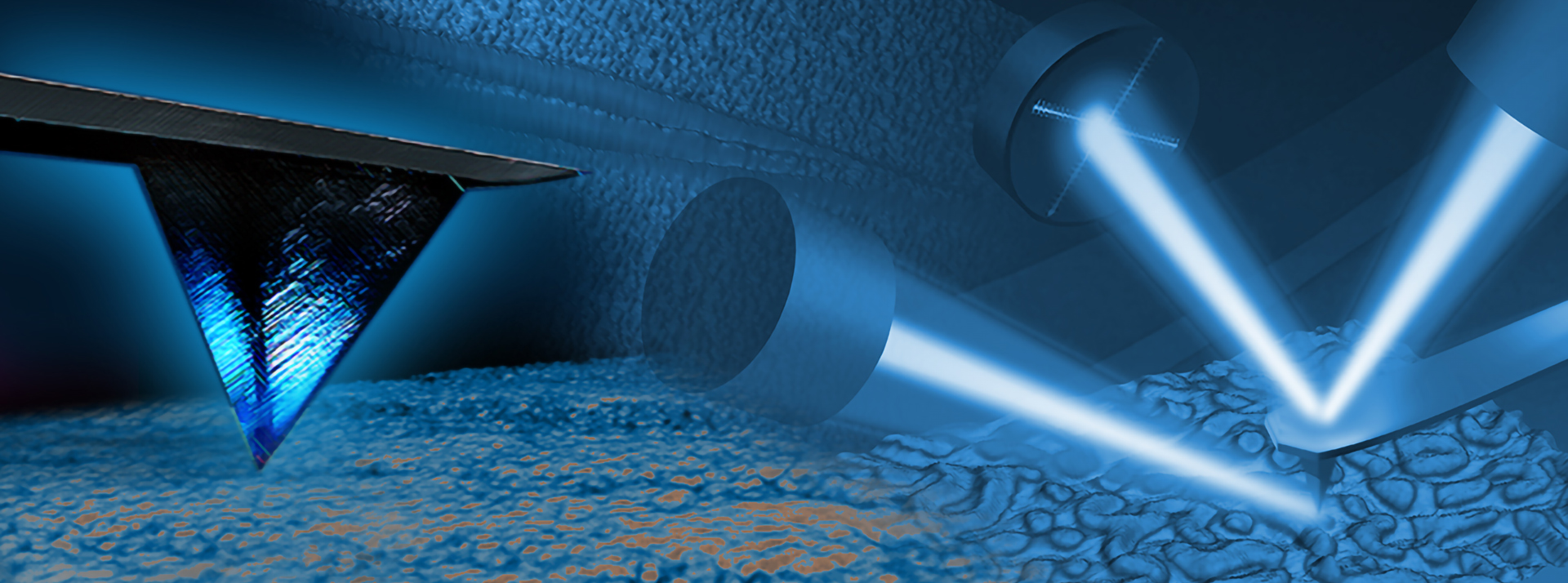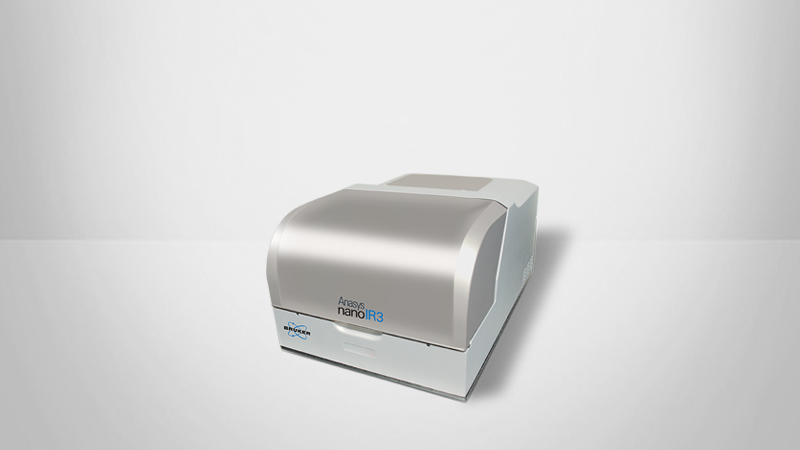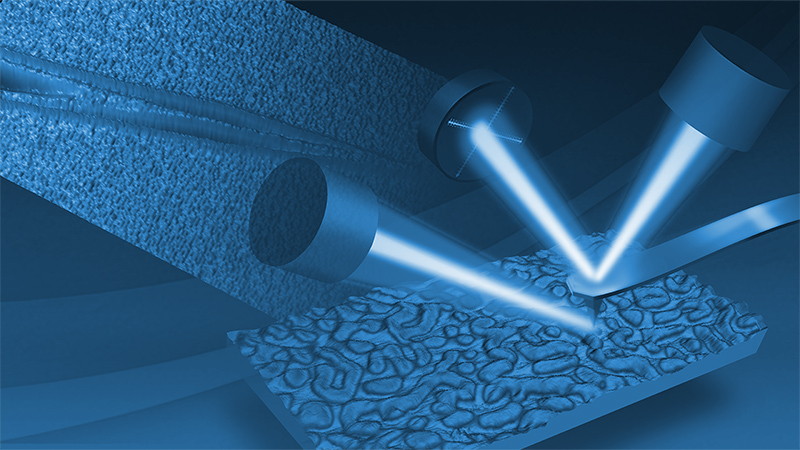

NanoIR Spectroscopy & Imaging: Recent Developments and Applications
Learn how the latest AFM-IR technology supports leading-edge research
Find out more about Bruker's latest nano IR product updates, hear our panel of expert speakers discuss their work with leading nano-IR technology, and see real-time demonstrations of the new Surface Sensitive mode and new AFM-IR platforms for Bruker's Anasys nanoIR systems.
Webinar Summary
By combining infrared spectroscopy with atomic force microscopy (AFM-IR), it is possible to perform chemical analysis and compositional mapping with a spatial resolution down to 10 nm, which greatly surpasses standard optical diffraction limits. During this 2-hour event, our speakers explore:
- Origins of the AFM-IR technique
- Recent advances in AFM-IR technology
- Applications that can benefit from AFM-IR spectroscopy—especially life sciences and environmental chemistry
Bruker Application Scientist Dr. Cassandra Phillips hosts the workshop and live demos, providing an overview of Bruker's latest nanoIR product updates. Watch this webinar to:
- Hear distinguished guest speakers discuss their work on AFM-IR with the nano-IR platform
- Experience Bruker's new patented Surface Sensitive mode
- Become familiar with Bruker's new AFM-IR platforms
Find out more about the technology featured in this webinar or our other solutions for AFM-IR spectroscopy and imaging:
Webinar Overview
| Presentation Length | Presentation Title | Presenter | Abstract |
| 35 min | NanoIR through PeakForce Infrared (PFIR) Microscopy | Xiaoji Xu, Ph.D. | Here, Xiaoji Xu, Ph.D. (Lehigh University) introduces the novel PFIR method of AFM-IR developed at Lehigh University. This method of label-free chemical nanoscopy is based on the mechanical detection of photothermal response by AFM operated in PeakForce Tapping mode and ultimately can achieve a higher spatial resolution (sub-10 nm) and provide more rich chemical information than many of the existing tools we use for chemical imaging—or imaging in general—while also providing greater flexibility in applicability to samples in both air and liquid. In addition to providing a review of the strengths and benefits of PFIR as they relate to foundational AFM-IR and PeakForce Tapping principles and capabilities, the presentater explores and provides detailed, real-world examples of PFIR's applicability to a broad range of sample types and experimental settings. |
| 20 min | Biology at the Nanoscale: From Viruses to Amyloids | Dmitry Kurouski, Ph.D. | In this presentation, Dmitry Kurouski, Ph.D. (Texas A&M University) showcases his team's research and findings using TERS and AFM-IR to investigate viruses, viral particles, and alpha-synuclein oligomers. Topics of this discussion range from an exploration of how IR/AFMIR spectroscopy reveals a variety of infrared spectra in biological samples that are otherwise inaccessible by traditional Raman microscopy methods, to a detailed presentation of the team's findings via a combination of AFM-IR and TERS about changes observed in the secondary structural organization and surface structure information of populations of oligomers relative to their impact on the development of Parkinson's disease. These two technologies possess different capabilities that demonstrate strong complementarity in terms of both the chemical information available and the achievable probing depth. |
| 15 min | Quantitative Demonstration of Surface Sensitivity with nanoIR3 | Cassandra Philips, Ph.D. | The presenter conducts a profile analysis of a PMMA wedge sample in both Resonance enhanced and Surface Sensitivity modes, then demonstrate the analytical process for data collected in Surface Sensitivity mode. Comparison of the data outputs of various operational modes demonstrates that using the same probe and sample, users can switch from looking at bulk measurements (where the signal increases linearly with the thickness) to measurements with a surface sensitivity on the order of 15 nm just by adjusting the parameters. Surface Sensitivity mode enables measurement of the top layer of a sample with significantly improved accuracy over other operational modes, as it collects data only from the surface and not from the absorbing material beneath it. |
| 15 min | Demonstration: New Platforms for AFM-IR | Cassandra Philips, Ph.D. | The presenter introduces the unique capabilities of a new Bruker platform for AFM-IR imaging. Looking at a sample of PMMA beads in epoxy resin, the presenter demonstrates the new platform's capability to achieve higher acuity and operate at higher scan speeds than other nanoIR systems. Its integration with both Bruker's most advanced AFM controller and legacy Tapping Mode imaging capabilities are explored. Additionally, the presenter showcases the ability to switch wavenumber and reconfigure laser power mid-scan (to look at both the epoxy band and the carbonyl band of the sample), as well as the platform's unique capacity to switch between sample-scanning and tip-scanning configurations, enabling investigation of the chemical composition and mechanical properties of the same sample using the same probe. |
Featured Products and Technology
Speakers
Cassandra Phillips, Ph.D.
Application Scientist, BrukerCassandra did her Ph.D. at the University of Toronto exploring the photophysics of boron nitride nanotubes using scattering scanning nearfield optical microscopy (s-SNOM) and computational models. She has been working at Bruker Nano Surfaces and Metrology since September 2019 as an Applications Scientist focusing on nanoscale IR spectro-microscopy and other correlated imaging techniques realized with atomic force microscopy.
Xiaoji Xu, Ph.D., Lehigh University
Dr. Xiaoji Xu's research lab at Lehigh University is working to develop new methods and instruments for chemical measurement and imaging at the nanoscale with < 10 nm spatial resolution. He is particularly interested in nanoscale characterizations of polymers, aerosols, polaritonic materials, and biological samples.
Dmitry Kurouski, Ph.D., Texas A&M University
The laboratory of Dr. Dmitry Kurouski at the Texas A&M University, Department of Biochemistry and Biophysics, works on the development of both nano-raman and nano-infrared spectroscopies for non-invasive, non-destructive, and confirmatory diagnostics of biotic and abiotic stresses on plants.

